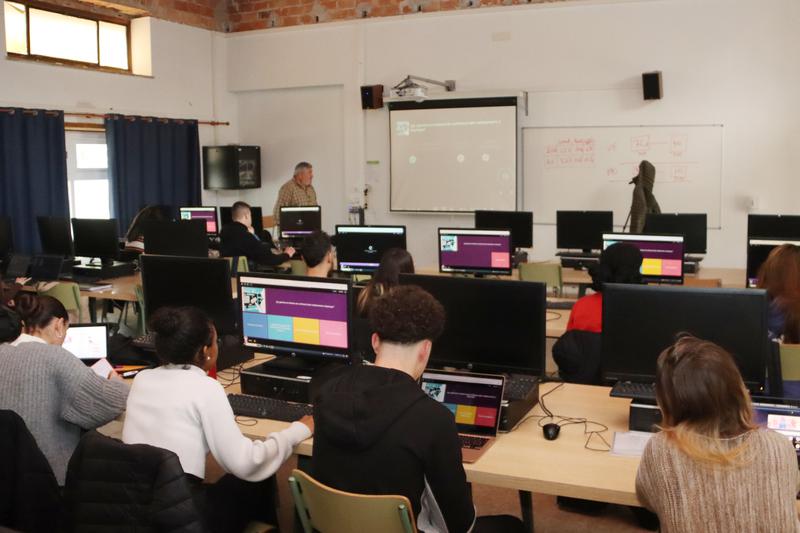Groundbreaking project introduces artificial intelligence to eleven schools in Tarragona
More than 180 teachers participate in ‘AI Skills Lab’ project with positive results

In September 2023, at the beginning of the school year, a new artificial intelligence project from the University Rovira i Virgili (URV) was introduced in eleven primary, secondary, and vocational schools in the Tarragona region, south of Barcelona.
The ‘AI Skills Lab’ project is designed to teach educators how to use the new technology to create educational content and manage the schools. Through monthly online sessions led by experts from around the world, teachers receive guidance on how to introduce artificial intelligence into the classroom.
Thereby, the students will get familiarized with programs and apps that will allow them to develop their creativity and use it in some school projects.
“It’s a piece of technology present in our lives, and we thought it was important to bring it closer to the education field because the things that go on in our lives can’t be removed from what goes on in the classrooms," explains Mar Camacho, director of the project and Ph.D. in Educational Technology, at the department of Pedagogy at URV.
A well-received project
Carme Prades, one of the project’s advisors and pedagogical coordinator of the secondary school Cal·lípolis in Tarragona, says that the project has been well received at the schools, that about half of the teaching staff, some 180 teachers, signed on to the project.
“We’re are learning about AI, text or image generation, intermodular elements or apps,” says Prades, of the training that following the training sessions is tested out in the classrooms.
It’s a groundbreaking project, and so far, the results have been positive, according to the project leaders.
ChatGPT and Stable diffusion among apps used
One of the apps used in the project is ChatGPT, which teachers use as “an assistant that helps out with the most bureaucratic parts of the job” such as creating documents. The extra time gained is then used by teachers to create other content.
In addition, the project also explores how AI can be used to analyze data. “It can help us identify group trends, dropout risks, or other problem areas in the schools so we can address them,” explains Prades.
One of the things that has surprised teachers and students is Stable Diffusion, an image-generation tool that can create images at the direction of the students.
According to Raül Samper, a hairstyling and grooming student, Stable Diffusion is a great tool “to get ideas” for haircuts and styles. “When you search on Google, you get the same images,” he says.
The app can create very detailed images based on users’ instructions and feedback, Prades adds.
AI as an evaluation tool
Another way artificial intelligence can be used in the classroom is as an evaluation tool.
Ramon Cerdà, a pharmacology and parapharmacology teacher, uses AI to evaluate his students in tests. Specifically, Cerdà uses AI to create test questions by running his educational videos or texts through AI, which then suggests a series of questions about the content. Cerdà reviews the questions and adds them to a template in the program Quizziz, which creates a competition-style test.
Students have only a few seconds to answer and have immediate feedback on whether their answer is correct or incorrect. The program also collects data and statistics on which students performed best and which questions had the most correct or incorrect answers.
Without AI, it would take the teacher two hours to prepare this type of activity, but with it, it only takes him 30 minutes. The time gained he uses on preparing other teaching materials.
An “empowering” project
Both the URV and the teaching centers are aware of the fact that AI is still a relatively unknown type of technology with its potential and its risks. “The limits and risks, such as confidentiality and personal data, have to be taken into account. All grades or sensitive data about the students are stored on a computer with local AI, not in the cloud,” Prades stresses.
Camacho adds that they haven’t had any problems in the project so far because a lot of prior work “has gone into informing the educational centers.”
The project also raises awareness among the students about the “good use” technology, and that it “empowers the students” because it’s “important to work on critical thinking when identifying ‘fakes’ and AI-generated news.
The project is financed by the Catalan Ministry of Education, and will only take place during this school year, for the time being.